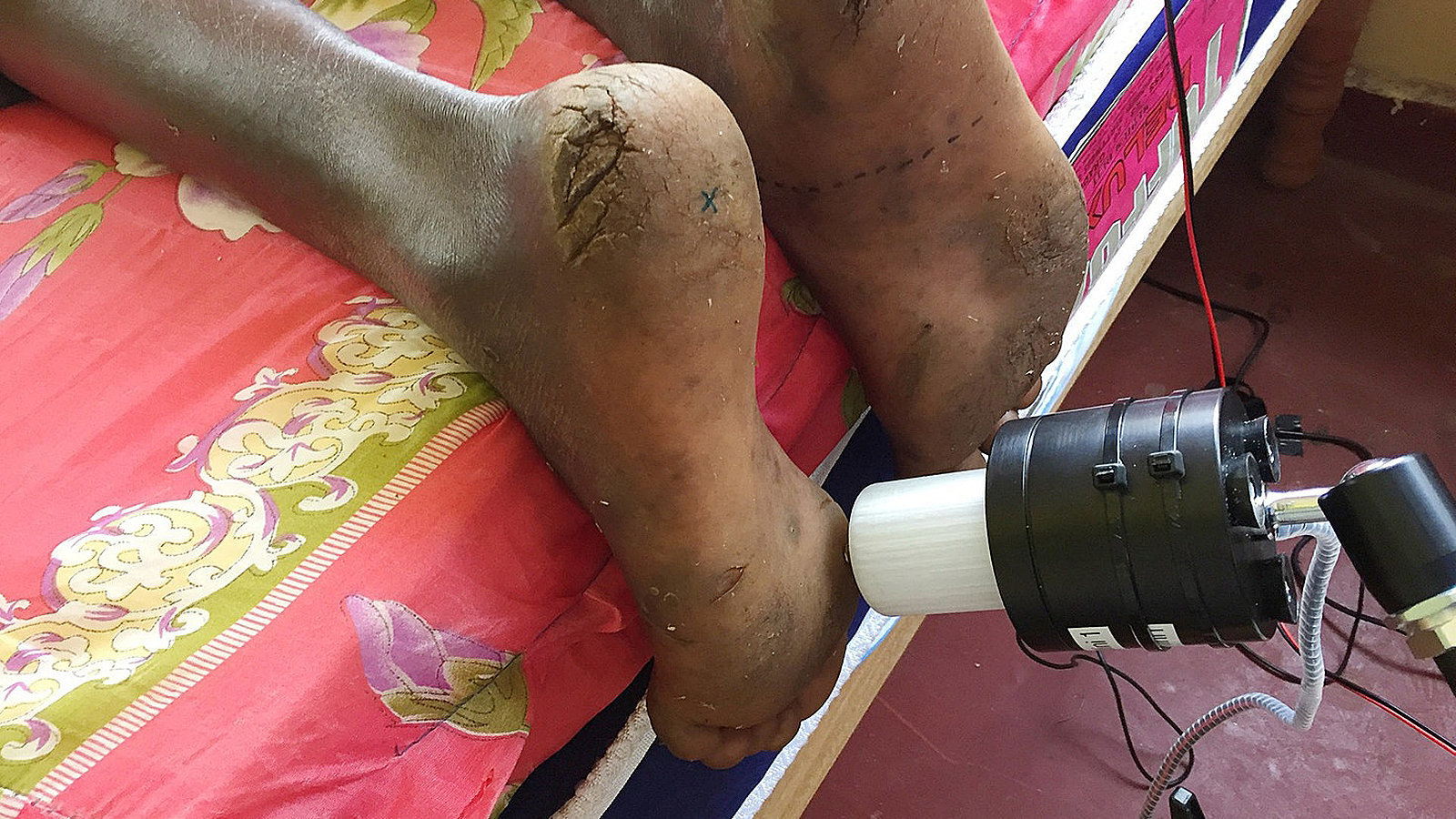Sensitive, Despite Thick Calluses
In the current issue of Nature, kinesiologists from Chemnitz and biologists from Harvard examine the influence of walking barefoot on the sensitivity of the soles of our feet
-

Researchers from Chemnitz University of Technology study the sensitivity of the soles of the feet of a test subject from Kenya, with the help of a so-called “shaker”. Photo: Professorship of Human Locomotion -

Prof. Dr. Thomas Milani from Chemnitz University of Technology, along with a research team from Harvard University, is investigating the influence of calluses on the sensitivity of the soles of our feet. Photo: Jacob Müller/Wolfgang Thieme
Humans began walking bipedally around six million years ago. Yet, the oldest known evidence of footwear is only 40,000 years old. Therefore, our human anatomy is well-adapted to living in a natural environment without shoes. A part of this adaptation is the callus, a natural protective layer on our feet – which, in the present day, is seen more as a cosmetic problem. But what influence does the callus have on the sensitivity of the soles of our feet? This was the investigation by Prof. Dr. Thomas Milani from the Professorship of Human Locomotion at Chemnitz University of Technology and Professor Daniel Lieberman from Harvard University.
Cooperation between Chemnitz and Harvard
In theory, this layer develops in between the ground and sensory receptors in the skin. These receptors can perceive, for example, the condition of the soil. Thus, the logical conclusion would be that an increase in size of the callus would dampen this perception when one walks. However, evolutionary biology theory stands in contrast to this – that over the span of millions of years, humans have adapted themselves ideally to life with calluses, so the function of these sensory receptors should not be impaired to any great extent.
To investigate the hypotheses, the international team of researchers, headed by the Chemnitz-based Milani and Harvard University’s Lieberman, travelled to Kenya in June 2016 and tested the thickness of the soles of the feet of 40 people who walk barefoot, using an ultrasound machine.
The sensitivity of the soles of the feet were also measured with a vibration device. For this, different levels of vibration were tracked via a measuring instrument, in order to determine the perception threshold of each subject. Kenyans who regularly wear shoes served as a control group for this study. The researchers were supported in this study by the Institute of Physiology at Moi University (Kenya).
Astounding results
The surprising result of these investigations: despite a 30 percent thicker callus, no difference in sensitivity between the groups was able to be detected. The research team concluded that the callus layer fulfils its protective function without any restriction on the function of the underlying sensory receptors.
“It is clear, that from an evolutionary biology perspective, our feet are not designed with shoes in mind,” says Milani. From this conclusion, however, walking barefoot on our paved streets and refraining from wearing shoes would also be wrong.
Publication
Holowka, N.B., Wynands, B., Drechsel, T., Yegian, A., Tobolsky, V.P., Okutoyi, R., Ojiambo Mang’Eni, Haile, D.K., Sigei, T., Zippenfennig, C., Milani, T.L. & Lieberman, D.E. (2019). Foot callus thickness does not trade off protection for dynamic skin sensitivity during walking. DOI: https://doi.org/10.1038/s41586-019-1345-6
For more information, please contact Prof. Dr. Thomas Milani, Chair of the Professorship of Human Locomotion at Chemnitz University of Technology, Phone +49 371 531-34536, E-mail thomas.milani@hsw.tu-chemnitz.de.
(Author: Matthias Fejes, Translation: Jeffrey Karnitz)
Mario Steinebach
02.07.2019




